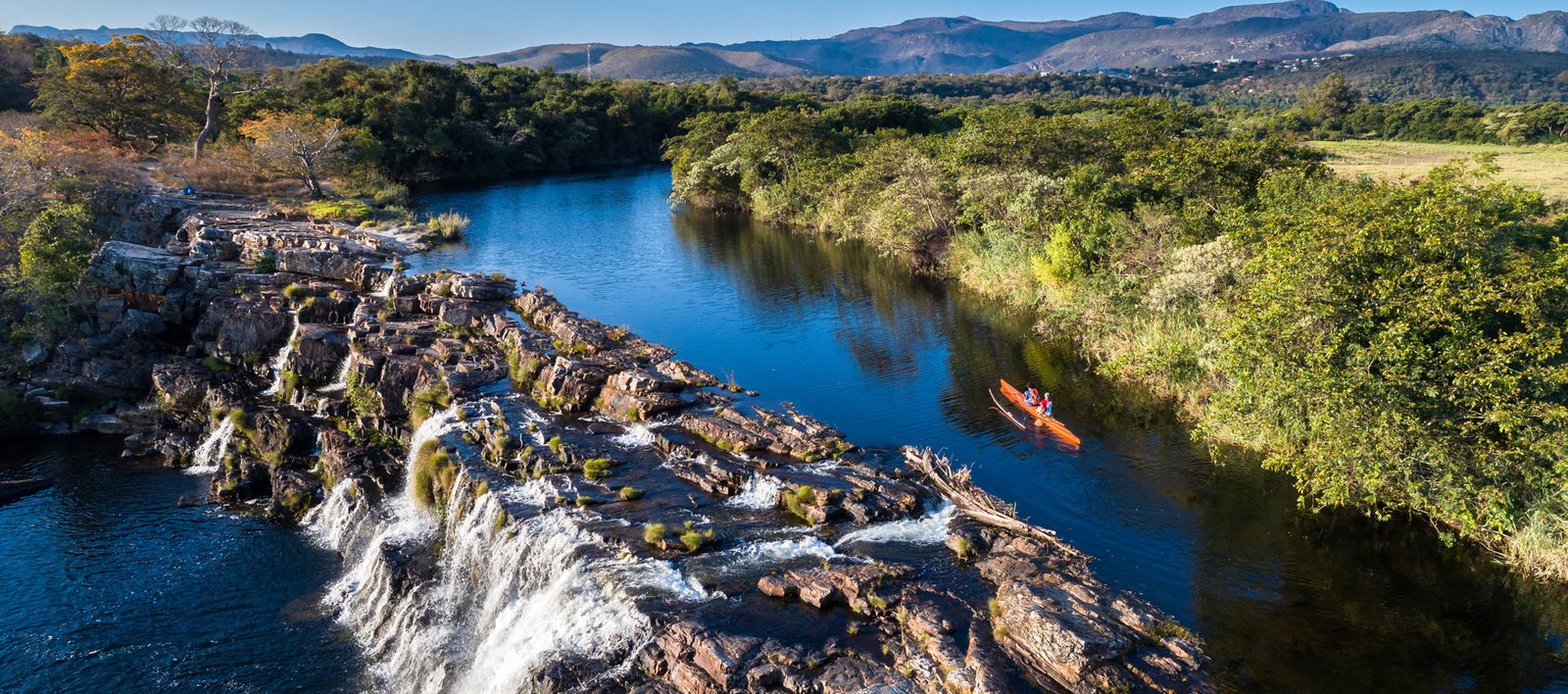
Serra do Cipó, the garden of Brazil
The main adventure destination in the state of Minas Gerais, Serra do Cipó, was dubbed the “Garden of Brazil” by famous landscape painter Roberto Burle Marx.
By Camila Fróis
Photos: Tom Alves
Despite its modest size (130 square miles), this national park protects the largest number of plants per square yard in the world. Tiny delicate flowers grow into vast multi-hued floral carpets that flourish nearly year-round. Spacious fields of strawflowers spread across the landscape, along with bromeliads, orchids, and another 1,600 catalogued species.
In addition to boasting incredible biodiversity, the natural environment accommodates an extraordinary range of campos rupestres (rupestrian grasslands), a kind of vegetation found only on certain mountains in Brazil. They coexist with mountain chains, caves, and many canyons cut by fast-flowing rivers. The uneven terrain embraces the waters of these rivers to form many streams that become huge waterfalls, cataracts, and waterholes that are perfect for refreshing dips. As dusk falls, the mountains glow silver and red, casting their tones over an infinity of rocks of many shapes and sizes.
Owing to landscapes like this, the park is considered one of the best stretches of the Serra do Espinhaço, the only mountain range in Brazil classified as a UNESCO Biosphere Reserve.
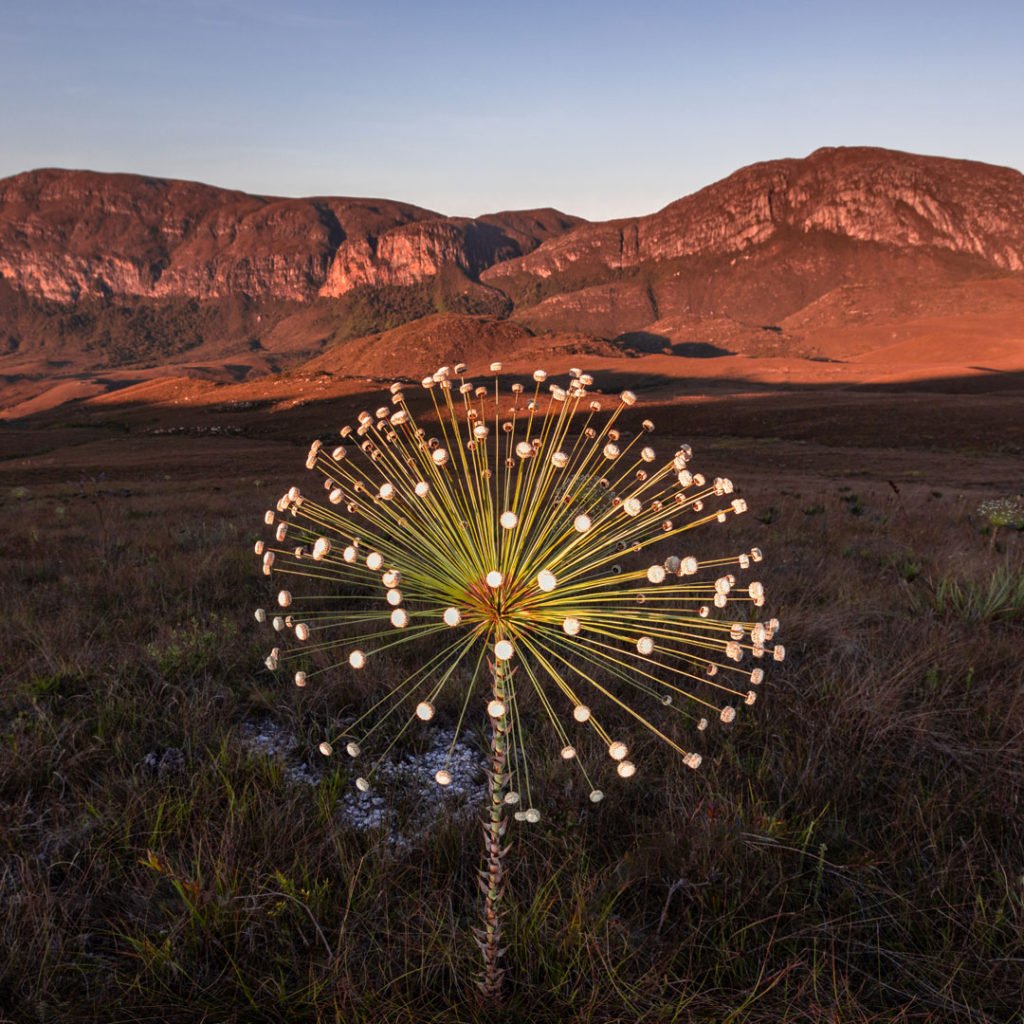
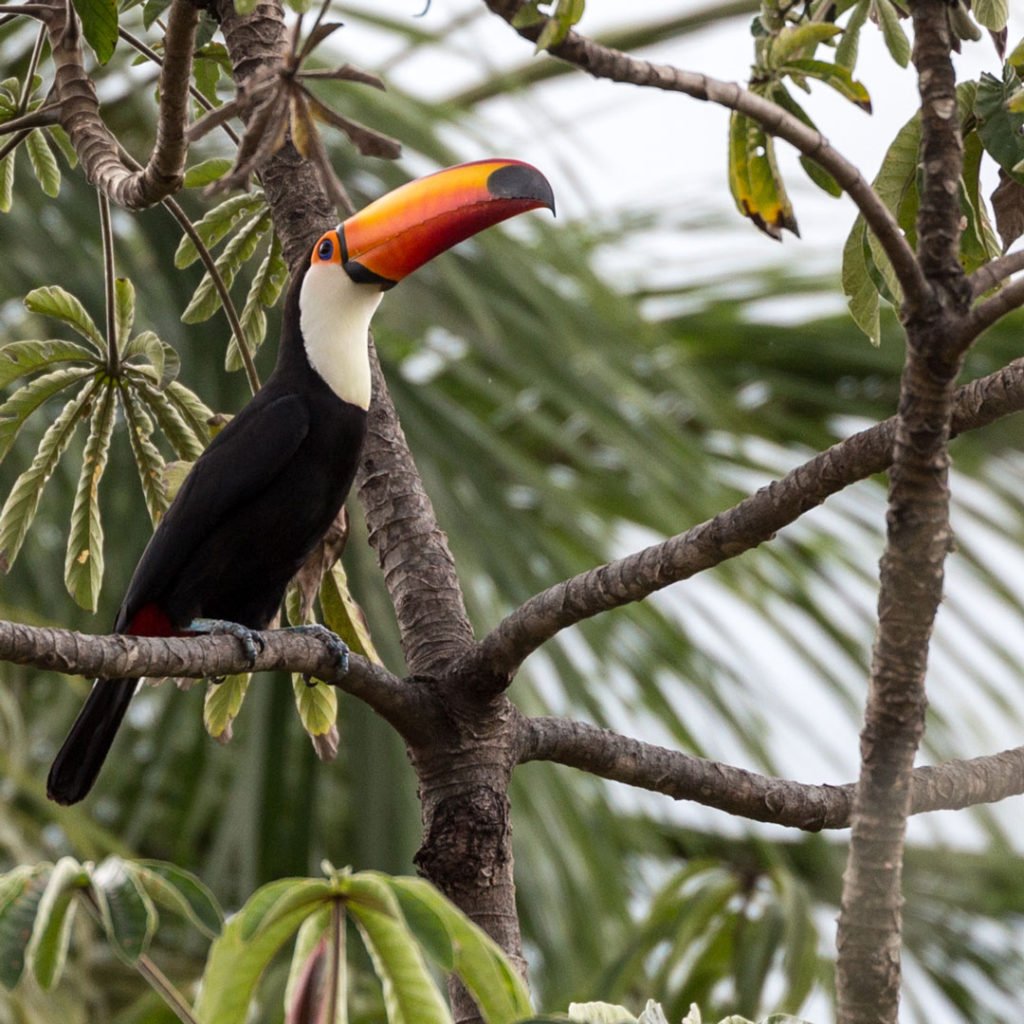
Adventures in History
Walks through these movie-worthy landscapes were already well-known in the 18th century, when enslaved people and bandeirantes (the first colonizers to explore the country’s interior) came here in search of gold and precious stones. Nowadays, visitors walk these paths looking for a different type of wealth. The most adventurous travelers can spend days here on extended treks, climbing, biking, and riding horses to the remote waterfalls and caves inside and near the park.
One of the most iconic routes includes the Vale do Travessão, a monumental crag some 2,300 feet high, with an unparalleled view of the place where the Serra do Cipó empties into the basins of the San Francisco and the Doce Rivers. They are the source of the enormous quantities of water that cascade down everywhere, forming a panoply of waterfalls.
Some attractions are easy to reach, while others require long hours on the road. Hardy souls can even attempt the storied 3-day walk from Lapinha to Cachoeira do Tabuleiro. The nearly 900-foot high waterfall can also be reached via a different winding road, but the landscape is not as dazzling.
The National Park’s main tourist route is a completely flat path that runs through the impressive landscapes of the Cerrado (a Brazilian ecosystem of tropical savannah), and includes sights such as the Palmitos waterfall and the imposing 886-foot high Cachoeira da Farofa, which is actually three waterfalls.
The park’s Cânion das Bandeirinhas is a gorge with walls rising over 260 feet in height. Reached by a flat 7.5-mile road, the site features several waterfalls. All the routes pass by flowering fields, rivers, and lakes, such as the Lagoa Comprida, and can be traversed on foot, by bike, or on horseback.
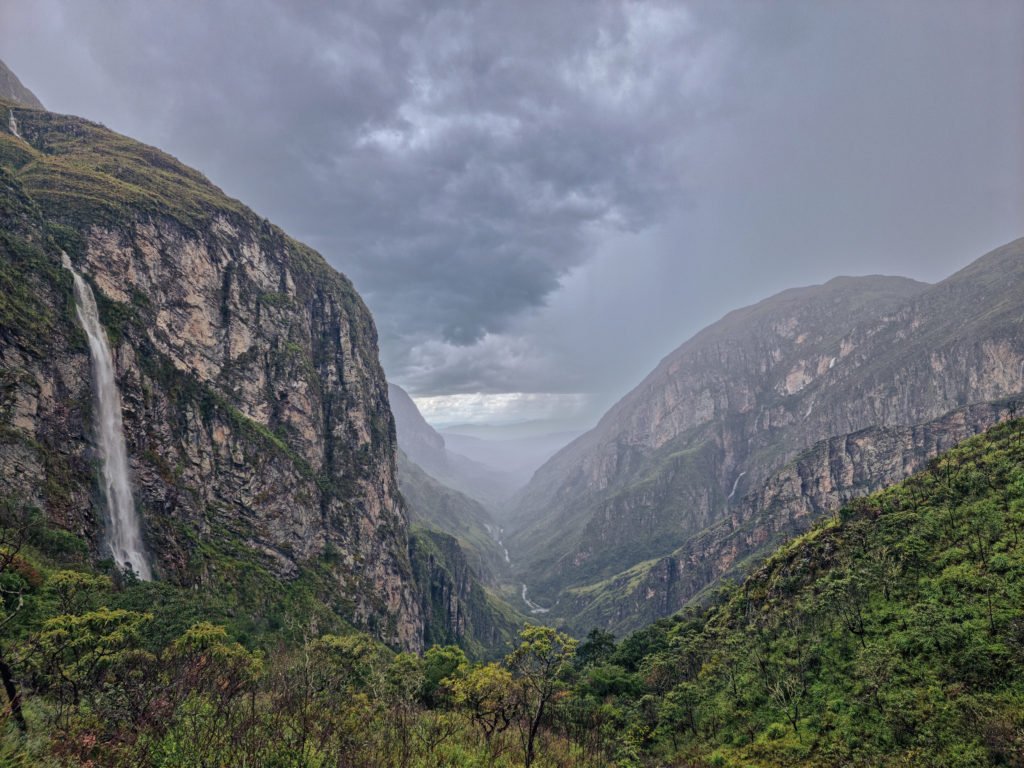
Take It Easy
f you’d rather take it easy, walks through the villages near the park will delight you with their lovely country ambience. Appealing towns like Lapinha da Serra and Tabuleiro invite travelers to stroll among houses with flower-filled terraces, sip a coffee, or visit home-style restaurants that serve irresistible local food.
Some of the mountain districts are also home to communities of quilombolas (descendants of enslaved Africans) who keep the traditions and festivals typical of their ancestral culture alive to the beat of Minas Gerais drums. One of the oldest customs is the congado, an expression of culture and religion that blends rituals from festivals brought from Africa with Christian observances. The ceremonies incorporate music, song, and dance.
In the community of Açude, in the municipality of Jaboticatubas, visitors can participate in the “senzala samba,” which is held on Sunday nights under the leadership of the matriarch, Mercês. This samba is played with the traditional Brazilian percussion instruments of conga and atabaque drums and tambourines, while the audience sings, dances, and celebrates life.


Other Attractions
Hiking and Waterfalls
La Serra do Cipó ofrece diversas opciones de caminata para los visitantes, incluyendo jornadas de medio día, día completo o de algunos días, que casi siempre terminan en increíbles cascadas. Vea a continuación las atracciones más clásicas y sus distancias de camino a pie, de ida y vuelta:
Grande, Véu de Noiva, and Serra Morena Waterfalls
These three gorgeous private retreats are easy to reach and provide visitors with all the necessary amenities.
Gavião and Andorinhas Waterfalls
The path leading to the two waterfalls, located on opposite branches of the Bocaina River, leads visitors through a spectacular range of landscapes that provide surprises throughout the journey.
Congonhas Waterfall
The Ribeirão Congonhas waterfalls, nearly 100 feet high, drop into a pool of clear green water that just calls out for a refreshing dip.
Bicame Waterfall
Located in a private protected area, Bicame is considered one of the region’s most beautiful waterfalls. To get there, you’ll need to follow a long trail through rocky outcrops and vast campos rupestres. This route offers birdwatchers the wonderful bonus of opportunities to spot the four endemic Serra do Cipó species: the Cipó canastero (Asthenes luizae), the Cipó Cinclodes (Cinclodes espinhacensis), the hyacinth visorbearer hummingbird (Augastes scutatus), and the Diamantina sabrewing hummingbird (Campylopterus diamantinensis).
Serra do Intendente State Park
The conservation area situated in the neighboring municipality of Conceição do Mato Dentro possesses many unique attractions, including the Cânion do Peixe Tolo canyon, the Rabo de Cavalo waterfall, and the Tabuleiro waterfall, the largest in Minas Gerais. They all form part of a circuit known as the Route of the Ten Waterfalls, a refreshing introduction to some of the region’s charms. For further information visit: @rotadasdezcachoeiras.
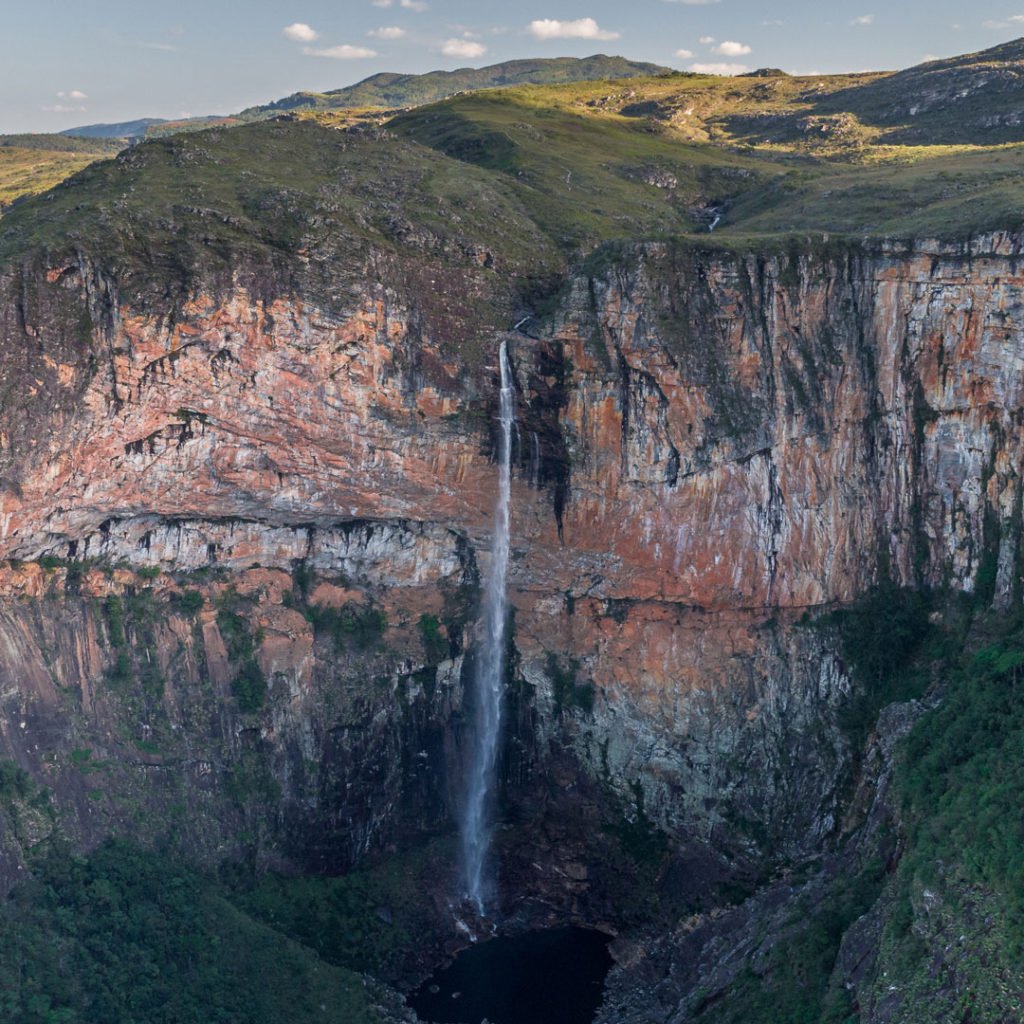

Overnights
Overnight from Alto Palacio to Serra dos Alves and from Alto Palacio to Cabeça de Boi
Beginning in the upper reaches of the National Park, the two trails lead to bucolic villages. The landscape shifts between mountain fields and fragments of forests; the terrain is generally rough, with valleys and canyons with waterfalls materializing on all sides. Each one of these paths is a three-day trek.
Overnight from Lapinha to Fechados
The hike departs from the municipality of Santana do Riacho, which features giant limestone rock formations that appeal to climbers. A tramp of several miles will bring you within sight of the Cânion das Éguas and a lovely stream from the Coronel Américo Teixeira reservoir. The hike continues through campos rupestres and impressive vistas of canyons and huge waterfalls.
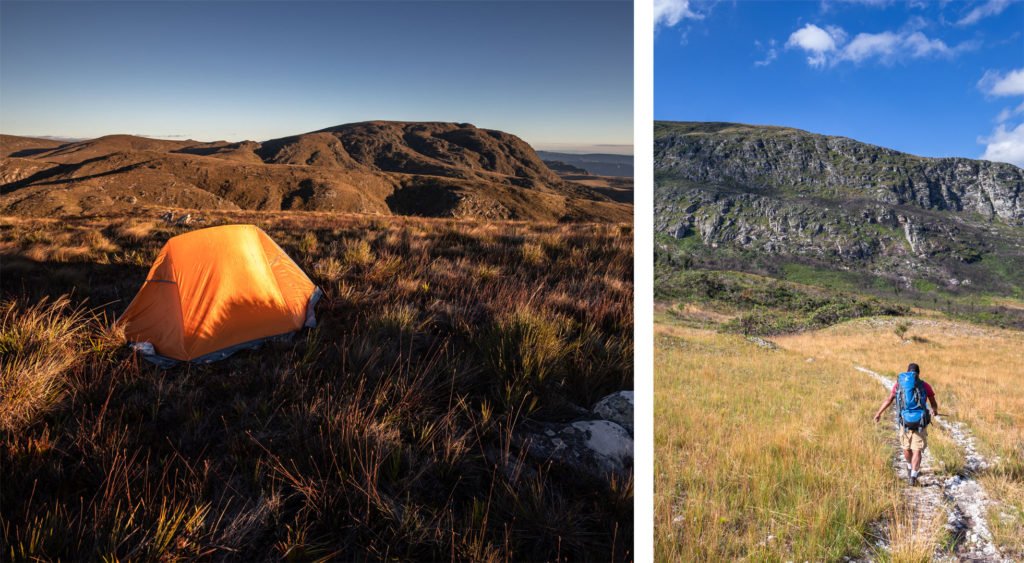
How to Get There?
The conservation area encompasses various municipalities but the access point with the best tourism infrastructure is the district of Serra do Cipó (with its eponymous National Park). It is located 62 miles from the capital, Belo Horizonte, and about 45 miles from the Confins International Airport. Visiting hours are 8 a.m. to 5 p.m. Horses and bicycles are available for rent. Instagram: @parnadaserradocipo.
When to Go?
The summer months (November to March) are the hottest, making swimming in the river very pleasant. In the dry season, from May to September, the days are clear and cooler, making for favorable hiking conditions and romantic journeys.




Leave a Reply